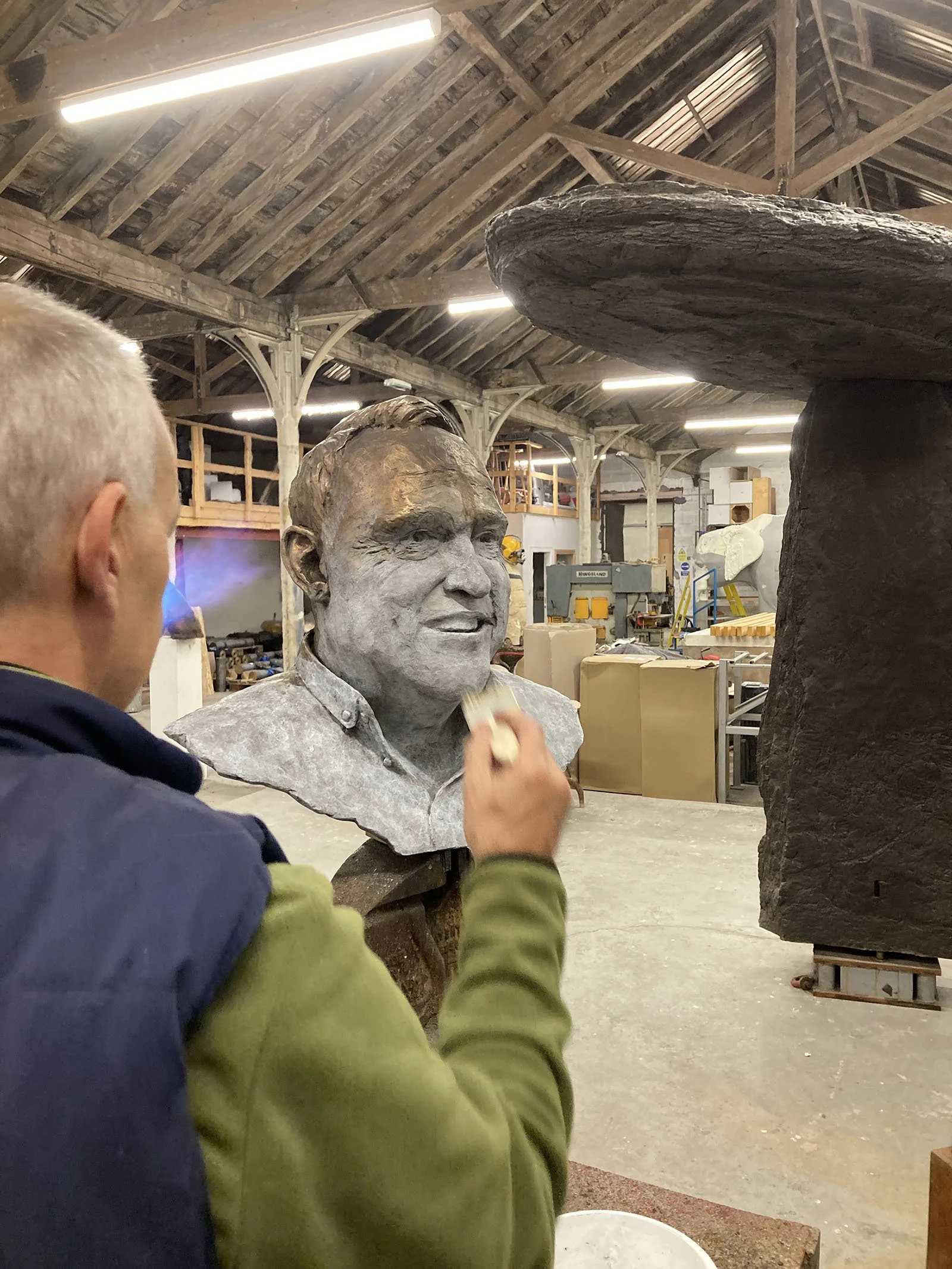The Commissioning Process
A portrait can be a bust, a full length figure, or a relief carving of any part of the body in a classical, stylised or abstracted form. My portraits aim to successfully capture not only a likeness but the presence and personality of the sitter.
Procedure: I work from life wherever possible supported by drawings, measurements and photographs. The process begins in clay with a ‘maquette’ which allows the client and myself to get a feel for the pose and each other. This is important as we will be working closely with each other throughout to agree every aspect including size, expression, stone type and costume. A full-size clay sculpt follows and I ask the sitter for at least two sessions where I work directly from life. These typically take an hour each. During this stage the client can make as many alterations and suggestions as they wish. The clay allows for these to be made easily and there is no time limit on this part of the process. It is essential for the client to feel totally happy before translating the piece into either stone or bronze. This stage involves the client in a visit to the studio for final sign off.
If the piece is to be finished as a bronze, the final ‘patination’ is discussed and agreed upon. Patination is a process where the colour and finish of the bronze is applied and greatly affects the final look.
If the final portrait is to be realised in stone then it is copied directly from the clay sculpt. There are many possibilities when using natural stones.
-
Bronze:
Used since ancient times this material has a deep classical tradition but in the modern era allows
for expressive styles with fresh and vibrant patinas ( surface colour )
Marble:
This most noble of stones has every quality that the carver needs to find subtle detail and nuance. It has a slight translucency to it not unlike our skin.
Limestone and sandstone:
This country is blessed with a myriad of stones with textures, colours and qualities to match any subject. Often with distinct grain and colour patterns that allow the material to contribute to the final image.
Terracotta:
Much like bronze, terracotta offers the possibility of direct and intuitive mark making and forms to be captured in the finished piece.
-
Although sometimes there may be exceptions, generally portrait pieces for domestic and interior display are life-sized or smaller. Those for display outside are slightly larger to compensate for them being in a wider environment. Often at 110% life-size the finished piece will not appear any bigger than life-size. Sometimes much larger scales suit the subject and can add to the impact of the sculpture.
-
As each piece is so individual, and can be realised in a number of media, timescales can vary a lot. Generally bronze and terracotta works take 6-9 months or slightly longer depending on the availability of the sitter or client. With marble and other stones 8 -10 months is a more realistic time frame.
-
Considerations that effect the price are: material, scale, costume, hairstyle and extra details such as glasses, hats or medals. Marble is the most expensive material as it has to be of ‘statuary’ quality which is pure white and imported from Italy.
The Sculpting Process
Working in either wet clay or oil clay, I begin by intuitively laying down marks to explore the subject. As the form, scale and details are decided upon I explore the character and aim to celebrate the sitter rather than just finding a likeness.
Details are finalised as we move toward sign-off.
In bronze the maquette is taken to a fine art foundry where a replica is cast in wax.
Checking the final details of the bronze cast
A casting wax is the first stage in the process
Heating the bronze and applying chemical patina
Testimonials
ROBERT HILLIER
“The family were totally spellbound when you first revealed the portrait of my father, Sir Harold Hillier. Without knowing him, apart from a few photographs, you had captured his spirit and character so that we now have a fitting memory of him in the gardens he created.”
GED MASON







